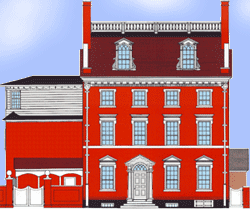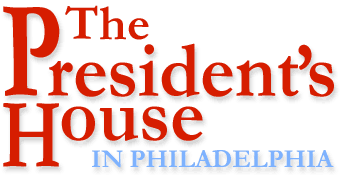Park Superintendent Martha Aikens Editorial
The following editorial was printed April 7, 2002 in the Philadelphia Inquirer.
Park tells the story of slavery
The Robert Morris mansion at Independence National Historical Park has been the subject of much media interest recently, especially the archaeology and interpretation of the site by the National Park Service.Public interest alone has demonstrated to us that the mansion has interpretive potential. The Park Service has long planned to interpret it, and we welcome suggestions about ways to reflect its history accurately and give visitors the best possible experience.
Our plan for Independence Park grew out of a 4½-year process (1993 to 1997) that included 18 public meetings and hundreds of letters from the public concerning the future of the three blocks north of Independence Hall. Many citizens made suggestions about those three blocks. The vast majority wanted the primary interpretive focus of the first block to remain the Liberty Bell.
As part of our archaeological investigations, we identified nine sites of interest within the footprint of the new Liberty Bell center. Five were completely excavated by our archeologists, yielding about 30,000 items — but preliminary analysis found nothing related to African American distinctive cultural practices. The other four sites, including the well-publicized remains of the icehouse, are slated for in-place preservation in accordance with Park Service policy and archaeological practice.
Contrary to some reports, we encountered nothing — other than the icehouse — directly tied to the Morris mansion. That would be expected, given the significant level of development that took place on that block during the 19th century. Implications that "the old slave quarters" have been uncovered, or deliberately not excavated, as part of this process are incorrect.
The Park Service plans to interpret several aspects of the Morris mansion, including its use by two presidents and the people in the household, including Washington's slaves. The mansion's location will be marked along the sidewalk of Market Street. There are, however, no plans to rebuild the mansion — as were the Declaration House and the City Tavern during the early 1970s — because current policies do not permit us to do so. Nor do we plan any full-scale outline of the mansion's floorplan, as some have suggested, because we genuinely believe that it would be confusing rather than revelatory.
Staff and programs at the park have long recognized both the existence of the Morris mansion and the slaves in Washington's household while he served as president. The story of slavery in our nation is a story told throughout the park. We tell the story at the Liberty Bell — so named by abolitionists — and at Independence Hall, the site of the Constitution's "three-fifths compromise." On walking tours, rangers speak of Thomas Jefferson, author of the Declaration and slave owner, and of Benjamin Franklin, a former slave owner turned ardent abolitionist. In the future, the Independence Park Institute, an educational facility to be built on Independence Mall, will tell the stories of the struggle for freedom and the fight against slavery to school children and life-long learners.
The Deshler-Morris House in Germantown is the oldest surviving presidential residence in the nation. Currently, the National Park Service is developing a virtual tour. It includes a section on Hercules — a slave and cook to George Washington — and generally discusses Washington as a slave owner. While not adjacent to the Liberty Bell, the Deshler-Morris House is an intact, complete residence where Washington held state dinners and cabinet meetings, and where the slaves of his household also lived. With the current emphasis on heritage tourism in the region, the Deshler-Morris House should be one of the crown jewels of an area rich in historic sites.
The stories of the Liberty Bell and Independence Hall are part of our heritage — and we know it is also our task to tell the stories of those who were not free. We will continue to tell that story as accurately as possible throughout the park and at the Robert Morris Mansion site.
Martha B. Aikens, superintendent of Independence National Historical Park
Read the IHA response to this editorial




